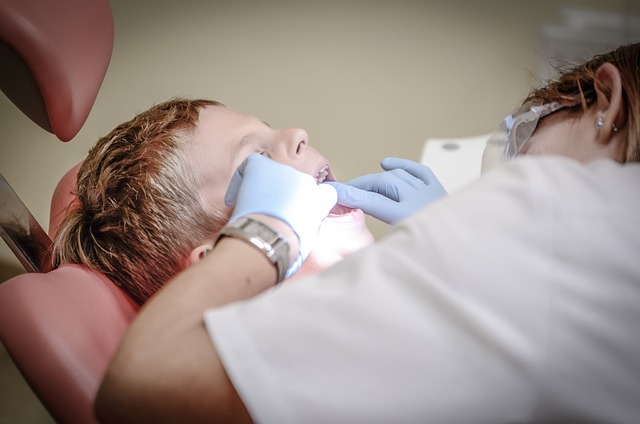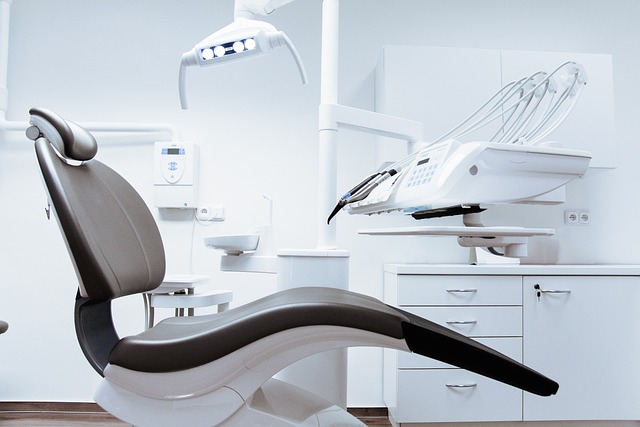Comfortable Healing: The Ideal Duration for Gauze after Tooth Extraction
Welcome to our informative article on “Comfortable Healing: The Ideal Duration for Gauze after Tooth Extraction.” Whether you have recently undergone a tooth extraction or are preparing for one in the near future, it’s crucial to understand the importance of post-extraction care for a smooth and comfortable healing process. One staple in this aftercare routine is the use of gauze, which helps promote blood clotting and protects the extraction site. In this article, we aim to guide you through the ideal duration for gauze usage after tooth extraction, ensuring a painless and hassle-free healing journey. So, grab a cup of tea and let’s dive right in!
1. Understanding the Importance of Proper Gauze Usage after Tooth Extraction
After a tooth extraction, proper gauze usage is crucial to ensure a smooth and healthy recovery process. Follow these important guidelines:
1. Gently Bite Down: Once the tooth has been extracted, your dentist or oral surgeon will place a piece of gauze over the site of extraction. Apply gentle pressure by biting down on the gauze pad. This helps control bleeding and promotes blood clot formation.
2. Replace Gauze as Needed: It’s normal for the gauze to become saturated with blood after a tooth extraction. If this happens, carefully remove the old gauze and replace it with a fresh piece. Be sure to use clean hands when handling the new gauze to prevent infection.
3. Keep Gauze in Place: It’s important to keep the gauze in place for the recommended amount of time specified by your dentist or oral surgeon. This usually ranges from 30 minutes to an hour. Avoid excessive talking, spitting, or touching the extraction site to prevent dislodging the blood clot and prolonging the healing process.
4. Change Positions: If bleeding persists after the initial gauze placement, try changing the position of the gauze pad. Gently bite down on a different spot or apply pressure to a different area of the extraction site. This can help promote blood clot formation and stop the bleeding.

2. Ensuring Comfortable Healing: What You Need to Know about Gauze after Tooth Extraction
After a tooth extraction, gauze plays a crucial role in ensuring a comfortable healing process. Here is what you need to know about using gauze:
1. Applying Gauze:
- Timing: Keep the initial gauze pad in place for at least 30 minutes after the extraction to control bleeding.
- Pressure: Bite down gently on the gauze pad to apply pressure and promote blood clotting.
- Changing Gauze: If bleeding continues, replace the gauze pad every 30 to 45 minutes until it subsides. Remember to wash hands thoroughly before handling new gauze.
2. Comfort Tips:
- Moisture: Slightly moisten the gauze pad with cold water before placing it to alleviate any discomfort or irritation.
- Positioning: Ensure the gauze covers the extraction site entirely and gently bite down to keep it in place.
- No Chewing: Avoid chewing near the extraction site to prevent dislodging the blood clot or causing further pain.

3. How Long Should You Use Gauze after Tooth Extraction? Finding the Ideal Duration
If you’ve recently had a tooth extraction, you may be wondering how long you should use gauze to aid in the healing process. While every case is unique, there are some general guidelines to consider. It’s important to remember that these recommendations are not set in stone and consulting with your dentist is always the best course of action.
To ensure a successful recovery, it is typically recommended to use gauze for the first 24-48 hours following the extraction. This will help control bleeding and facilitate the formation of a blood clot, which is crucial for proper healing. Here are some things to keep in mind:
- Replace the gauze every 30 minutes or as recommended by your dentist.
- Apply gentle pressure by biting down on the gauze to promote clotting.
- Avoid disturbing the clot by refraining from activities such as rinsing, spitting, or using straws for at least 24 hours.
After the initial 24-48 hours, you may begin to reduce the use of gauze as you see fit. However, it’s essential to ensure that the bleeding has completely stopped and that the blood clot has had a chance to form adequately. Discontinuing the use of gauze prematurely could lead to complications such as dry socket, a painful condition that occurs when the blood clot dislodges or dissolves too quickly.

4. The Role of Gauze in Promoting Efficient Healing after Tooth Extraction
After a tooth extraction, it is essential to facilitate a speedy and efficient healing process. One key element in achieving this is the use of gauze. Gauze plays a vital role in promoting healing by protecting the extraction site, controlling bleeding, and reducing the risk of infection.
Here are some key benefits of using gauze after a tooth extraction:
- Protection: Gauze acts as a physical barrier, shielding the extraction site from external contaminants, such as food particles and bacteria, that may interfere with the healing process. It helps maintain a clean environment within the oral cavity, reducing the risk of complications.
- Hemostasis: Gauze assists in controlling bleeding after the extraction by applying gentle pressure to the area. By promoting the formation of blood clots, it aids in the coagulation process, preventing excessive bleeding and facilitating the initiation of healing.
- Wound management: When placed over the extraction site, gauze absorbs any residual blood or saliva, keeping the area dry. This promotes better wound management by preventing the formation of a moist environment that could delay the healing process.
- Comfort: By providing a cushioning layer, gauze helps minimize discomfort and sensitivity at the extraction site. It also offers protection against accidental trauma that could be caused by chewing or accidental biting, allowing for a more comfortable healing process.
In conclusion, utilizing gauze in the post-tooth extraction phase is crucial for efficient healing. Its protective nature, ability to control bleeding, aid in wound management, and promote comfort all contribute to a smoother recovery process. Remember to follow your dentist’s instructions on gauze usage and ensure proper oral care to optimize the healing after a tooth extraction.

5. Comfort is Key: Tips to Ensure a Pleasant Experience while Using Gauze after Tooth Extraction
After a tooth extraction, ensuring a comfortable experience while using gauze is crucial for a swift recovery. Follow these simple tips to make the process more pleasant and alleviate any discomfort:
- Choose the right gauze: Opt for sterile gauze pads specifically designed for oral use. These are more comfortable and provide better coverage for the extraction site.
- Use gentle pressure: When placing the gauze over the extraction site, apply gentle pressure by biting down. This helps to control bleeding and allows the blood to clot, promoting healing.
- Avoid excessive changing: It may be tempting to constantly replace the gauze for a fresh one, but this can disrupt the clotting process. Aim to change the gauze only when it becomes soaked, usually after 30 minutes or so.
- Keep your mouth clean: Maintaining good oral hygiene is crucial during the healing process. Rinse your mouth gently with warm saltwater after removing the gauze to keep the extraction site clean and reduce the risk of infection.
- Mind your diet: Stick to soft, cool foods for the first few days, avoiding hot or spicy foods that can irritate the extraction site. Also, try to drink liquids through a straw to minimize direct contact with the area.
By following these tips, you can make your experience with gauze after a tooth extraction as comfortable as possible. However, if you experience excessive bleeding, severe pain, or any unusual symptoms, be sure to reach out to your healthcare provider right away for further guidance and support.
6. Unveiling the Optimal Timeframe: A Guide to Wearing Gauze after Tooth Extraction
After a tooth extraction, taking proper care of the extraction site is crucial for a speedy recovery. One common method used to protect the area and promote healing is the use of gauze. While gauze can be highly effective, it’s essential to understand the optimal timeframe for wearing it in order to avoid any complications. Here is a guide to help you determine how long you should wear gauze after a tooth extraction:
1. Initial 30-45 minutes: Immediately after your tooth extraction, you will be instructed to bite down gently on a piece of sterile gauze. This pressure helps control bleeding by promoting blood clot formation. It’s crucial to keep the gauze in place for at least 30-45 minutes to allow the clotting process to initiate.
2. First 24 hours: For the first 24 hours following the procedure, it’s common to experience some oozing or bleeding from the extraction site. During this time, it’s advisable to change the gauze every hour or as needed. Ensure that you carefully remove the old gauze and replace it with a fresh, sterile piece to maintain cleanliness and reduce the risk of infection.
7. Say Goodbye to Discomfort: Exploring the Ideal Period for Gauze Usage after Tooth Extraction
After a tooth extraction, it’s crucial to take proper care of the extraction site to ensure a smooth and comfortable healing process. One essential step in this process is using gauze to control bleeding and minimize discomfort. But how long should you use gauze after a tooth extraction? We’re here to help answer that question and provide some helpful tips for maximizing your comfort.
While the ideal period for gauze usage may vary depending on individual circumstances, most dentists recommend using gauze for about 30 minutes following a tooth extraction. This initial period helps to control bleeding and allows a blood clot to form properly, protecting the extraction site. Remember, it’s important not to chew on the gauze or bite down forcefully during this time to prevent dislodging the blood clot.
- Change the gauze: After the initial 30 minutes, remove the gauze gently and evaluate the extraction site. If bleeding has significantly decreased or stopped, you can carefully discard the gauze. If bleeding persists, replace the gauze with a new piece and maintain light pressure for another 30 minutes.
- Avoid certain activities: Immediately after a tooth extraction, it’s best to avoid strenuous activities, such as exercising, that can increase blood flow and prolong bleeding. Engaging in these activities may also impede the formation of a proper blood clot, which is crucial for healing.
- Keep your mouth clean: Maintaining oral hygiene is essential after a tooth extraction. However, be sure to avoid rinsing your mouth vigorously or using a straw for the first 24 hours, as these actions may dislodge the blood clot. Instead, gently rinse with warm saltwater after 24 hours to keep the area clean.
By following these guidelines and paying attention to your healing process, you can say goodbye to discomfort and allow for a seamless recovery after a tooth extraction. Remember, it’s always best to consult with your dentist for personalized advice based on your specific situation.
8. Maximizing the Benefits: Understanding the Duration and Frequency of Gauze Application after Tooth Extraction
After a tooth extraction, proper gauze application is crucial for promoting effective healing and minimizing complications. Understanding the duration and frequency of gauze application can maximize the benefits and ensure a smooth recovery process. Here are some key points to keep in mind:
- Duration: The recommended duration for gauze application is typically around 30 minutes. This time frame allows the blood to clot and initial healing to take place. However, it’s essential to replace the gauze if it becomes saturated before the 30-minute mark to maintain clean and hygienic conditions.
- Frequency: It’s generally recommended to change the gauze pads every 30 minutes for the first few hours following the extraction. This helps control bleeding as fresh gauze promotes blood clotting. Gradually, as the bleeding reduces, you can extend the time between gauze changes to every 1-2 hours, and eventually, you’ll be able to discontinue gauze application altogether.
- Signs to watch out for: While it’s normal to experience some bleeding after a tooth extraction, excessive or prolonged bleeding can indicate a problem. If bleeding persists beyond a few hours, or if you notice a bright red flow, it’s important to contact your dentist for further instructions.
Remember, proper gauze application is just one part of the post-extraction care process. By following these guidelines and consulting with your dentist, you can help facilitate a speedy recovery and ensure optimal results.
9. The Healing Touch: Why Proper Gauze Usage is Crucial for Comfortable Tooth Extraction Recovery
In order to ensure a comfortable and swift recovery after a tooth extraction, proper gauze usage is absolutely crucial. Gauze pads are a simple yet effective tool that promotes healing and minimizes discomfort. Here are a few reasons why using gauze correctly is essential for a smooth recovery:
- Promotes blood clot formation: After a tooth extraction, it’s important to control bleeding and encourage the formation of blood clots at the extraction site. Placing a clean gauze pad firmly on the area and gently biting down helps apply pressure, which aids in the formation of these vital clots. These clots protect the empty socket, preventing infection and allowing new tissue to grow.
- Reduces swelling and discomfort: Gauze also helps to minimize swelling and discomfort in the days following an extraction. Placing a cold pack or ice wrapped in a gauze pad on the cheek near the extraction site can help reduce inflammation. Additionally, biting down on a gauze pad helps to absorb any excess blood and saliva, reducing the chance of irritation and providing a more comfortable experience.
Remember: When using gauze for tooth extraction recovery, it’s important to follow your dentist’s instructions carefully. Change the gauze pads as directed and avoid chewing on the pad to prevent potential complications. By utilizing proper gauze usage, you can ensure a healing touch that supports a comfortable and successful recovery.
10. Tips and Tricks for a Smooth Recovery: How to Use Gauze Comfortably after Tooth Extraction
After having a tooth extraction, proper care and comfort are key to a smooth recovery. One essential component of post-extraction care is the use of gauze to control bleeding and promote healing. Here are some tips and tricks to help you use gauze comfortably during your recovery:
1. Choose the right type of gauze: Opt for non-stick gauze pads or squares, as they are gentle on your gums and do not adhere to the extraction site, minimizing discomfort when removing them.
2. Use the correct size: Select a gauze pad that adequately covers the extraction site. Avoid using pieces that are too small, as they may not provide sufficient coverage or absorbency to manage bleeding effectively.
3. Change gauze regularly: To maintain cleanliness and control bleeding, replace the gauze pad every 30 minutes or as instructed by your dentist. Discard the used gauze properly and ensure your hands are clean before inserting a new piece.
4. Apply gentle pressure: Bite down softly on the gauze to create gentle pressure, which helps form a blood clot and reduce bleeding. Avoid excessive pressure, as it may dislodge the blood clot and impede the healing process.
Frequently Asked Questions
Q: Why is it necessary to use gauze after a tooth extraction?
A: Using gauze after a tooth extraction helps control bleeding and promotes clot formation in the extraction site. It also protects the socket from external irritants, such as food particles or bacteria, allowing for proper healing.
Q: How long should I keep gauze in my mouth after a tooth extraction?
A: The ideal duration for using gauze after a tooth extraction is generally around 30 minutes to an hour. This time frame allows for effective blood clot formation in the extraction site. However, it’s important to follow your dentist’s specific instructions, as the duration may vary depending on the complexity of the extraction and individual healing factors.
Q: What happens if I remove the gauze too early?
A: Removing the gauze too early can disrupt the blood clot that’s formed in the socket, leading to prolonged bleeding or a condition called “dry socket.” Dry socket occurs when the blood clot becomes dislodged or dissolves before the wound has a chance to heal, causing pain, infection, and delayed healing. Therefore, it’s crucial to adhere to the recommended duration of gauze usage to minimize the risk of complications.
Q: Can I change the gauze during the recommended duration?
A: It’s generally advised not to change the gauze during the recommended duration, as removing the existing gauze may disturb the clotting process. If the gauze becomes saturated with blood before the recommended timeframe, you can apply gentle pressure with a clean piece of gauze to control the bleeding. However, consult your dentist for specific instructions regarding gauze changing during your post-extraction healing process.
Q: Is it normal to have bleeding after removing the gauze?
A: It is normal to experience some minor bleeding for a short while even after removing the gauze. If bleeding persists or becomes heavy, you can bite down on a fresh piece of gauze or a moistened tea bag gently, focusing the pressure on the extraction site, for another 30 minutes. If bleeding still persists after these measures, it’s important to contact your dentist.
Q: Are there any alternatives to gauze that can be used for aftercare?
A: Yes, there are alternative options for aftercare besides gauze. Some dentists may recommend using a moistened tea bag for its tannic acid properties, which can aid in clot formation and reduce bleeding. Additionally, specialized post-extraction dressings may be utilized in certain cases. It’s best to consult your dentist to determine the most suitable option for your specific situation.
Q: What other post-extraction care should I take besides using gauze?
A: Besides using gauze, it’s essential to follow your dentist’s instructions for post-extraction care. This may include avoiding certain activities such as rinsing your mouth vigorously, smoking, or drinking through a straw, which can dislodge the blood clot. Maintaining good oral hygiene by gently brushing and flossing the remaining teeth is vital but should be done with caution around the extraction site. Consuming soft foods and staying hydrated can also aid in your recovery process.
Q: How long does it generally take for the extraction site to heal completely?
A: The healing time for a tooth extraction site varies depending on various factors, including the complexity of the extraction, overall health, and individual healing ability. In most cases, complete healing can take anywhere from one to two weeks. However, it’s important to note that each person’s healing time may differ, and it’s best to consult your dentist for a more accurate timeline based on your specific situation.
Conclusion
In conclusion, finding comfort in the healing process after a tooth extraction is crucial for a smooth and seamless recovery. Understanding the ideal duration for gauze use plays a significant role in promoting optimal healing while minimizing any potential discomfort or complications.
By adhering to the recommended timeline of changing gauze, you give your extraction site the opportunity to form a stable blood clot, protect against infection, and aid in the proper healing of the surrounding tissues. Remember, each individual’s healing process may vary slightly, so it’s essential to consult your dental professional for personalized guidance.
While the initial discomfort and bleeding may seem daunting, it’s important to trust in the healing power of your body. Remember to rest, eat nutritious soft foods, and practice good oral hygiene during the recovery period. If you experience severe pain, excessive bleeding, or any other concerning symptoms, don’t hesitate to reach out to your dentist promptly.
Our aim is to provide you with the knowledge and tips necessary to make your journey to comfortable healing after tooth extraction as smooth as possible. By following these guidelines, you can ensure that embarking on the path to recovery will be a painless and peaceful experience. We wish you a speedy recovery and a healthy smile!






